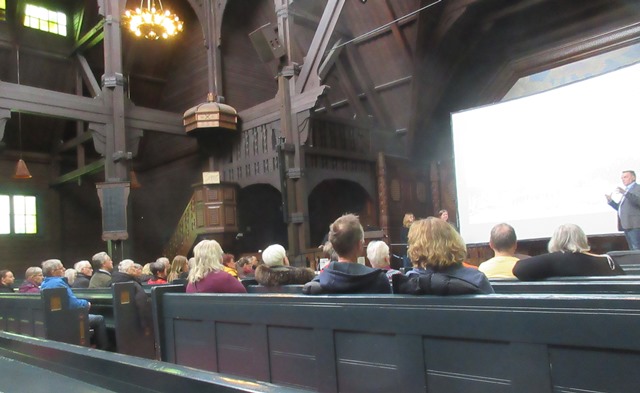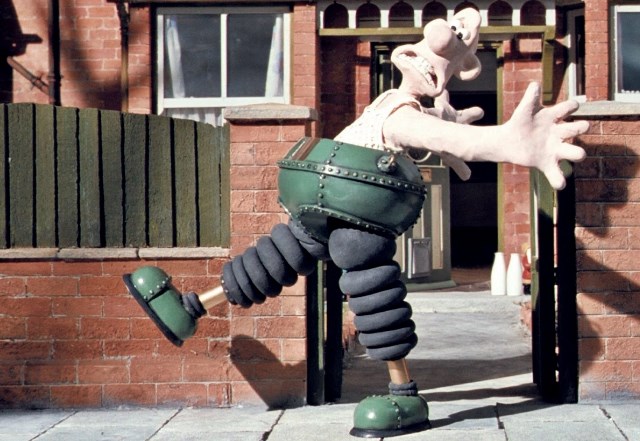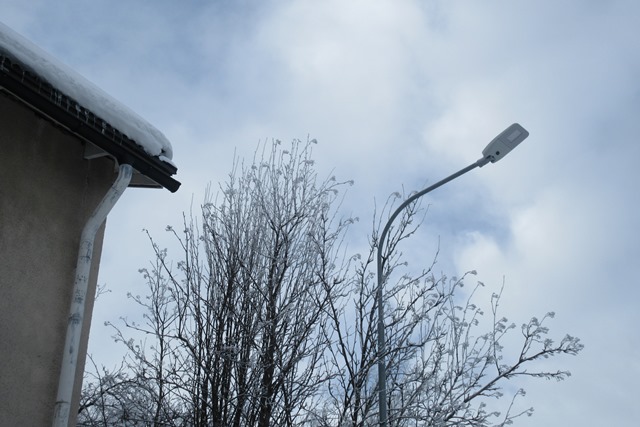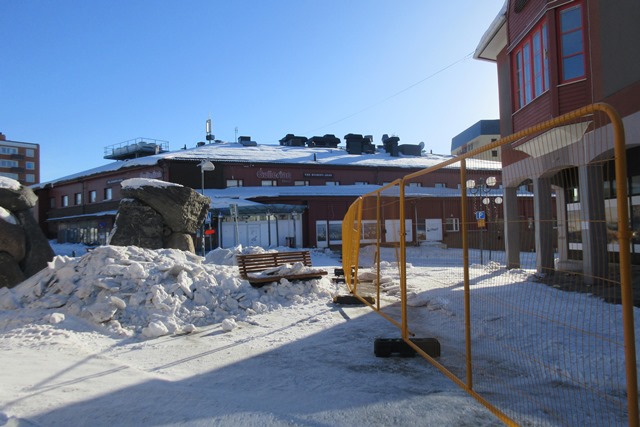I’ve been to a few LKAB (the mining company) information meetings in my time. I know what to expect – a fairly slick, but very slow, presentation, lots of words projected on a screen, reassuring smiles, and ‘fika’ – a coffee and bun. In the early days of discussing the need to knock down the town and rebuild it somewhere else there were many such meetings. They were never very well attended, but a number of Kiruna residents would make the effort, possibly mainly for the ‘fika’.
Meetings followed a pattern. After a rather tedious presentation by a couple of LKAB staff, there would be questions. Someone would ask a detailed technical question that no-one would be able to answer properly, and then another person would ask a question no-one understood, because it was off the subject, or at such a tangent no-one knew how to respond. The meeting would get a bit confusing, the audience lose interest, and then it would be brought to a hasty close so that we could have ‘fika’.
So it was last night in Kiruna’s church. LKAB held a meeting on how they planned to move the church building. It followed the usual pattern, except that a vicar was involved, and there was no ‘fika’.

We learnt virtually nothing about technical or engineering aspects of moving the building, the thing we were interested in. Instead we got a vague description of the process that we’d already read about in their information leaflet, plus a lecture on the history of the church. After that there was the expected technical question or two from the floor, and the predictable ‘difficult customer’ or two – who expressed that they didn’t want the church moved at all (who does?) – and then the meeting ended. It didn’t feel like it had hit the right note.
People in Kiruna probably care more about the church building than any other. What they wanted last night, it seemed to me, was recognition that this was an emotional issue as much as a practical one. They wanted reassurance. Instead they got a project management style description of a process for moving a building, and they didn’t even get a coffee and a bun.
They were worried that something might go wrong in the move and the church might be damaged. Were LKAB’s project team up to the job? someone asked. The man from LKAB replied with a smile that this was the responsibility of Mammoet (the Dutch company who physically do the moving) and they had lots of experience – implying it was not a concern of LKAB’s, or ours.
The man from Mammoet should have been there – the one with the joystick on a tray hanging round his neck. We saw him move three buildings in town a couple of years ago. We watched him at close quarters, through a wire fence, as he carefully lowered a large two storey building down onto its new foundations, controlling every millimetre of movement. When it was safely down he lit a cigarette and gave us a thumbs up. He knew we wanted that reassurance.



















